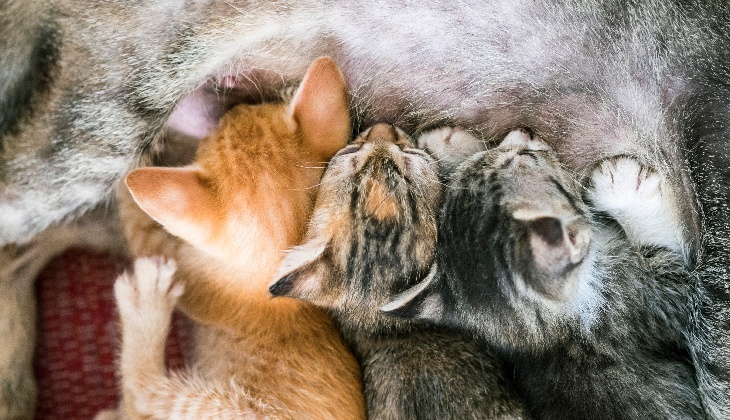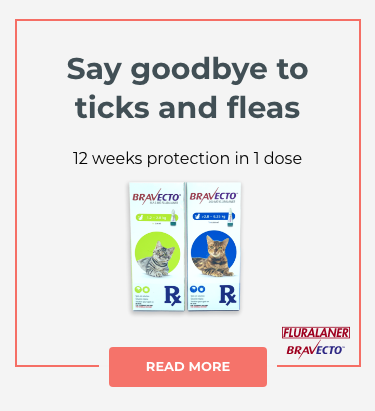Armour Up Against Parasitic Worms In Cats
HEALTH & PROTECTION
31 May, 2021
5 minutes

Is it fair to say that your cat is a bit of a mystery? Cats can be curious, cuddly, wise, and aloof all within one moment. Their very nature is fiercely independent and wild at heart. But for as independent and wild as your cat may be, he or she does need your care and protection, not only for food and shelter but also for ongoing armour against common internal parasites that would do anything to get under your cat’s skin. We’re talking about roundworm, hookworm, and tapeworm. It might be hard to imagine that a tiny little worm can harm your cat, but it’s true: any one of these parasitic worms can threaten the wellbeing, and sometimes the very life, of your cat.
Parasites are organisms that live on or inside an organism of another species and lives off of that host. Prevention of intestinal worm infection is essential to keeping your cat healthy. Deworming is a key part of responsible pet ownership and keeping both your cat and your family healthy. Kittens become infected with roundworms through the ingestion of larvae in their mother’s milk and from infective eggs in the environment and in prey, hookworm larvae from the environment, and tapeworms from fleas. The first step in learning how to prevent parasitic cat worms from preying on your pet is to understand the nature of these harmful creatures.

ROUNDWORMS IN CATS
Roundworms can cause severe disease in cats. The roundworm Toxocara cati, the most common worm in cats, can also pose a zoonotic risk, which means that larvae of this worm can cause disease in you and your family if infective eggs are swallowed.
Cats become infected with roundworm by the ingesting of larvae in their mother’s milk, in infected rodents or raw or undercooked meat, or through the ingestion of infective eggs from the environment. Once ingested, the larvae hatch out in the intestines and then move to the liver, and lungs, where they proceed to feed and develop until they return to the intestines to mature into adult worms. Adult roundworms lay eggs that pass in the cat’s stool, and the entire life cycle begins again.
Common signs of roundworm in kittens include a pot-bellied appearance, abdominal discomfort, poor appetite, vomiting, diarrhoea, and poor growth. Adults cats usually show no signs at all. If you suspect your cat is infected, visit your veterinarian immediately because the prognosis is good when treated quickly.
HOOKWORMS IN CATS
Hookworms are tiny parasites that hook into the lining of your cat’s intestinal wall to feed on tissue and blood. They are roughly 1/8 inch (2-3 mm) in size, which means they’re practically invisible. They can pass by ingesting infected prey or from larvae burrowing through your cat’s skin. Once the larvae reach your cat’s intestines, they can complete their life cycle.

There are several different types of hookworms, but the two common to cats are Ancylostoma tubaeforme and Ancylostoma braziliense. Signs of hookworm infection include anaemia, blood in the stool, weight loss, and a poor coat. If you suspect that your cat has hookworms, plan a visit to the veterinarian immediately. Your vet will be able to diagnose hookworm by examining a faecal sample. Treatment for hookworm includes a deworming medication. Recovery is often quick and easy for cats who receive treatment. Sometimes kittens or cats who experience severe anaemia may require a blood transfusion.
TAPEWORMS IN CATS
Fleas are common parasites that live on the skin of cats. Like any organism, fleas are also prey to other parasites, so when a flea preys on your cat, the parasites within the flea can be transmitted to your cat, too. This is how a common tapeworm can infect your cat. If your cat has fleas and happens to swallow a tapeworm-infected flea while grooming, your cat will also become infected with the tapeworm. Other types of tapeworms can also be transmitted by other rodents and reptiles, like mice or lizards, so if your cat is a keen hunter that eats its prey then he or she may become infected this way too. Often the only sign of tapeworm is when the tapeworm segments or tapeworm eggs are found in your cat’s faeces. Other signs that your cat has tapeworm can include malaise, mild diarrhoea, and a pot-bellied appearance. Treatment for tapeworm includes a dewormer to treat existing infection and effective flea control.
Thinking about all of these different types of worms in cats may begin to make your skin crawl, but luckily there are ways to make sure that your little feline friend is protected around the clock. First, be sure to keep your home environment clean—remove stool from your cat’s litterbox every day and properly dispose of any cat or dog faeces in your yard. Second, follow your veterinarian’s recommended protocol for deworming your cat. Kittens should be dewormed regularly from two to three weeks of age until 6 months old; adult cats should be dewormed at least four times per year based on their risk for worms. Third, employ preventative care methods to keep your cat, and your family, safe. Talk to your veterinarian.
RECOMMENDED







